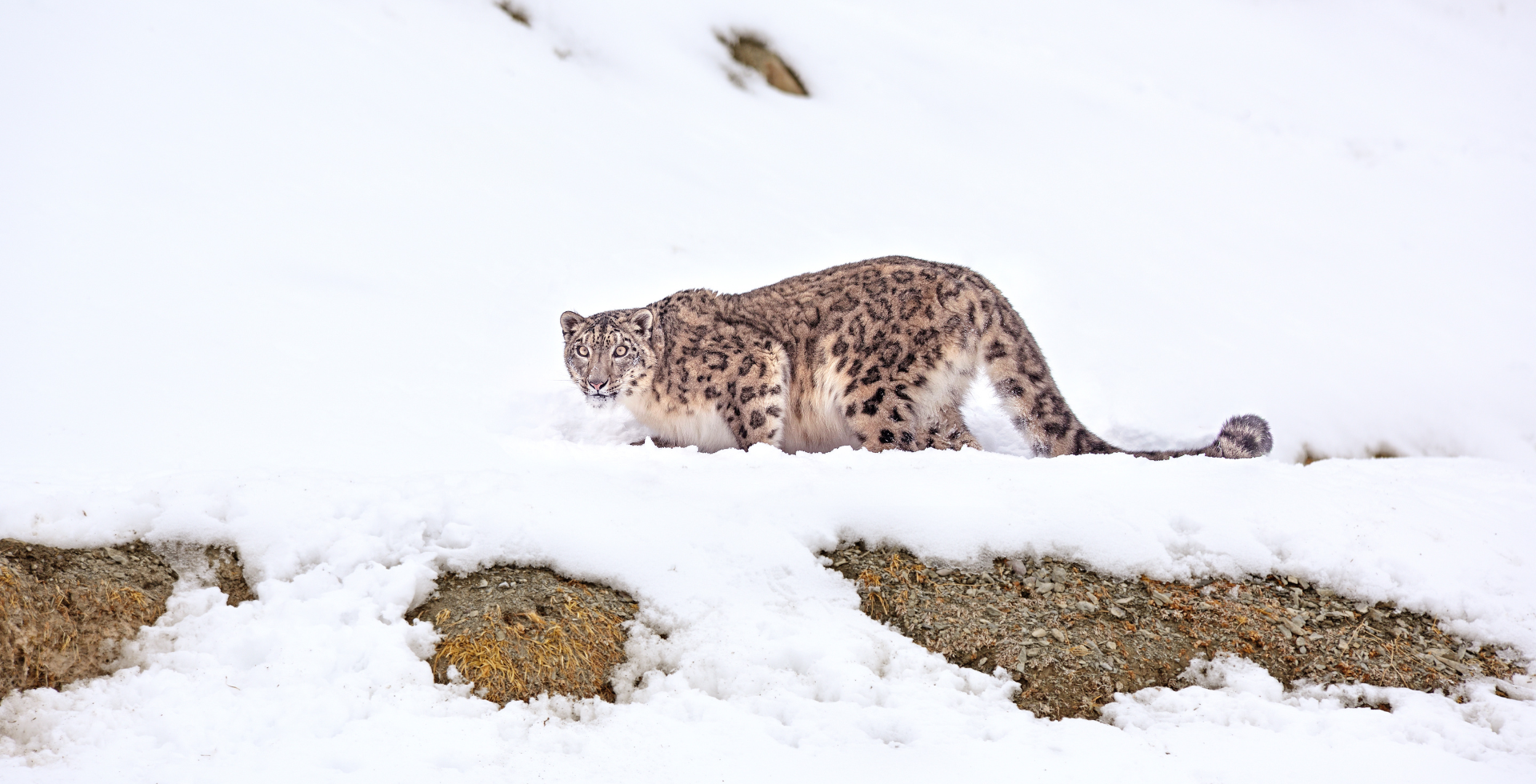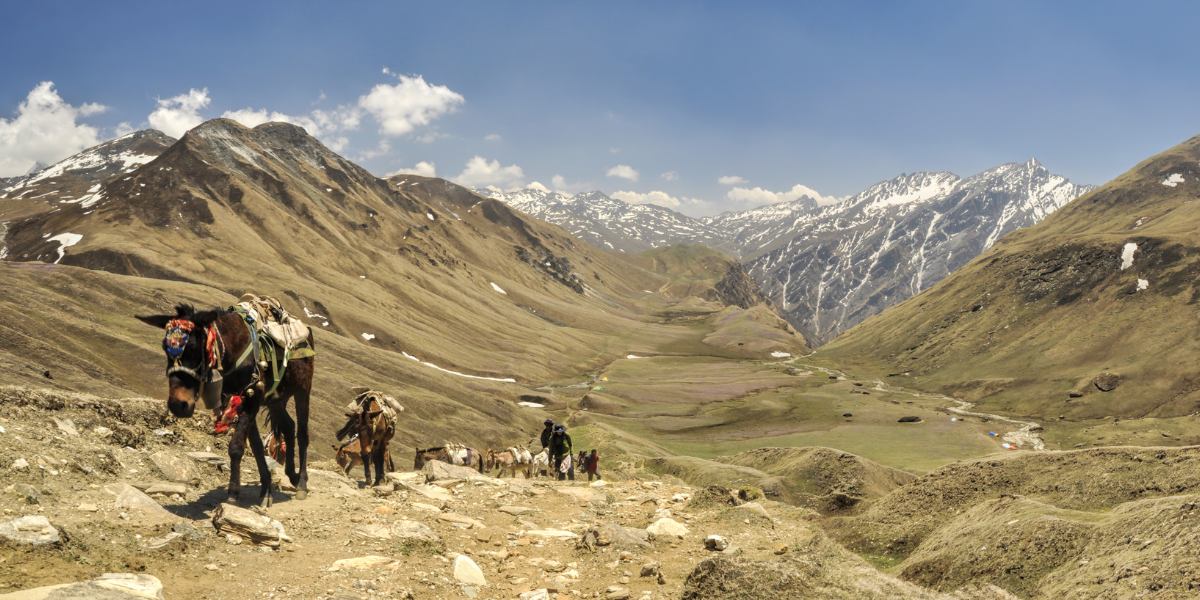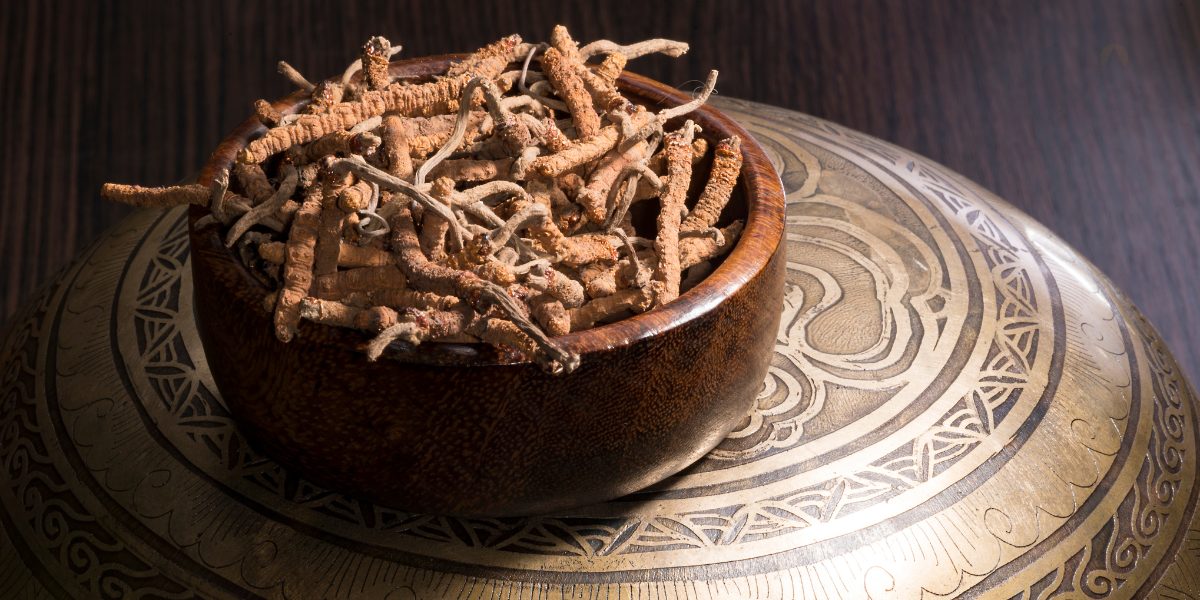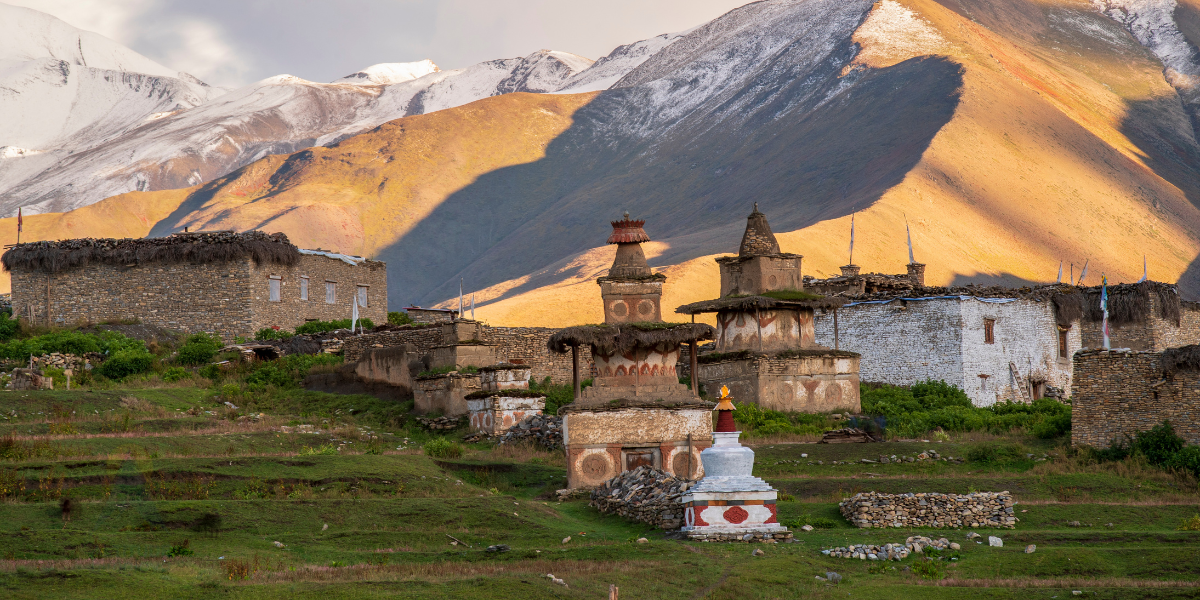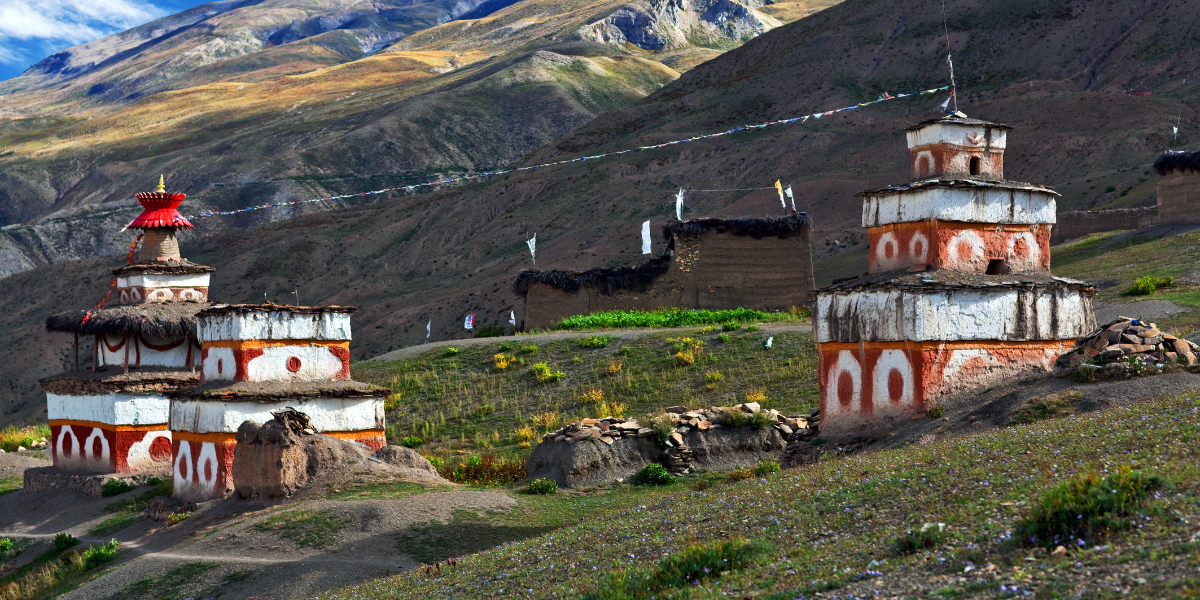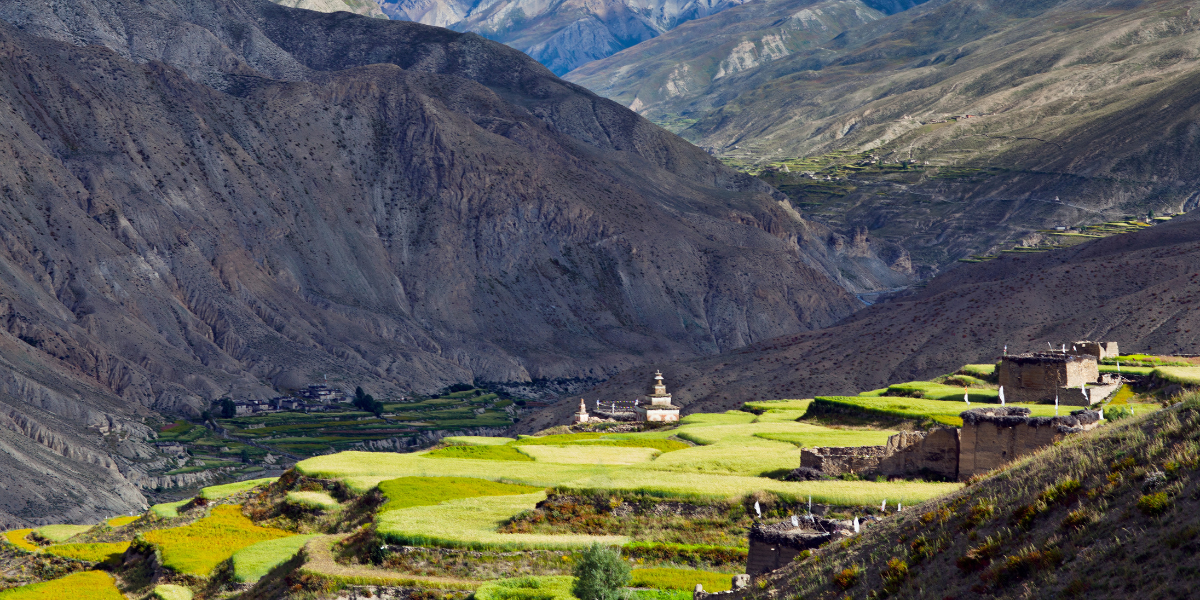Established in 1984 AD to preserve the unique ecosystem of the Trans-Himalayan diversity of flora and fauna in the Dolpo region lies Shey Phoksundo National Park. It is one of 12 national parks of Nepal, covering an area of 3,555 km2 making it the largest national park in Nepal. The park's distinctive name is a combination of two prominent Dolpo landmark names: "Shey," which is an ancient monastery in the Upper Dolpo region, and "Phoksundo," which is a stunning lake in the Lower Dolpo region. Located on the north-west side of Nepal in Karnali province, it is one of the most isolated and unique national parks in Nepal.
Shey Phoksundo National Park offers splendid sights from a variety of landscapes, from beautiful landmarks such as lakes to stunning landscapes and exotic flora and fauna. The elevation in the park ranges from 2,130 m in Ankhe to 6,883 m at the summit of Kanjiroba Himal. As the park spans from the northern to the southern side of the Himalayan region, it experiences a wide geographical range. Ranging from alpine and subalpine geography in the Lower region to Trans-Himalayan geography in the Upper region, making it geographically rich. The Tras-Himalayan region is the result of the Dhaulagiri and Kanjiroba Ranges forming a huge barrier that keeps the majority of the rain from reaching the area. The monsoon-dominated climate is in the south (Suligad), while the arid climate falls on the northern slopes. Winters are quite severe, with frequent snowfalls and temperatures remaining below freezing above 3000 meters throughout the winter.
Shey Phoksundo National Park Facts
Here are some of the facts about Shey Phoksundo National Park:
|
Location |
Dolpa District, Karnali Province, Northwestern part of Nepal |
|
Established |
1984 AD |
|
Total area |
3,555 km2 |
|
Feature |
The largest and the only Trans Himalayan National Park in Nepal. |
|
Altitude range |
2,130 meters to 6,883 meters |
|
Major Attraction |
Phoksundo Lake, Shey Gompa, High trekking passes |
|
Flora |
Orchids, Solomon’s seal, Lilac, Wild asparagus, Wild rose, Aconites, Meconopsis, Rhododendron, Barberry, Juniper |
|
Fauna |
Snow leopard, Grey wolf, Musk deer, Lynx, Fox, Blue sheep, Wild yak, Marmot, Snow partridge, Himalayan Griffon Vulture, The bearded vulture, Geodromicus Dolpoensis |
|
Popular Trekking Routes |
Shey Phoksundo Lake Trek Lower Dolpo Circuit Trek Upper Dolpo Circuit Trek |
|
Best time to visit |
Spring (May) and Autumn (August to October) |
|
Entry Fee |
Nepalese Citizens: NPR 100 SAARC Nationals: NPR 1500 Foreigner: NPR 3000 Below 10 years old: Free (The Entry Fee is subject to change; we advise you to verify the updated cost) |
Shey Phoksundo National Park Highlights
Shey Phoksundo National Park is the only trans-Himalayan national park in Nepal, with some of the most unique landscapes and natural wonders that will leave you in awe. From majestic waterfalls and magical lakes that change colors according to seasons to the celestial views of the valleys and traditional villages, you will get to experience it all inside this national park. The major highlights of the Shey Phoksundo National Park are mentioned below.
Phoksundo Waterfall is also known as Suligad Waterfall. It is one of the major attractions on the way to Shey Phoksundo Lake, which falls inside the Shey Phoksundo National Park. The length of the Phoksundo waterfall is 167 meters tall. If you are particularly lucky, you might be able to spot a beautiful rainbow on the famous Phoksundo waterfall.
Phoksundo Lake, which is also called Shey Phoksundo Lake, is also another major highlight of the Shey Phoksundo National Park. Phoksundo Lake stands out for its turquoise colored water, which seems so surreal amongst the landscape of Lower Dolpo. Phoksundo Lake is also said to be the most beautiful lake in Nepal, which attracts numerous internal as well as external tourists in the national park.
Another highlight of the national park is the exquisite and rarest wild cat, the endangered Snow Leopard. Shey Phoksundo National Park, being the largest and most unique park in Nepal, has become a sanctuary for several wild flora and fauna, among which is the Snow Leopard. These beautiful cats thrive here due to its isolated and ideal location along with the perfect environment for their survival. The presence of these endangered animals is the natural indicator of a healthy mountain environment. They are also considered the guardians of the mountains by the locals, as they believe they are the pets of the gods.
Yarsagumba, nature's treasure, is mainly found in the Shey Phoksundo National Park along with a few other highlands of Nepal. These caterpillar fungi have been used as medicines to cure various diseases for centuries. The environment of the Dolpo region is perfect for these valuable herbs to thrive and has piqued the interest of many researchers due to its unique formation and medicinal properties.
The diverse landscape of Shey Phoksundo National Park itself is the highlight of the national park. The Shey Phoksundo National Park is rich in geographical diversity as its geographical structure ranges from alpine and subalpine to trans-himalayan from the south to the northern slopes. The area has a distinct charm due to its arid surroundings and majestic mountains. Last but not least, the most charming highlight of Shey Phoksundo National Park is the culture, settlements, and people of the park. The people in Shey Phoksundo National Park mostly follow Tibetan Buddhism and the Bon religion. The charming people of Shey Phoksundo National Park follow traditions passed down to them for generations.
Park’s Flora and Fauna
Shey Phoksundo National Park is a hidden paradise for exclusive flora and fauna due to its isolated nature and harsh weather, where some of the most beautiful and hard-to-find creatures thrive. It has become a haven for its native flora and fauna as it remains undisturbed by harsh human civilization. The lower region of Dolpo is covered in thick forests, a mix of deciduous and coniferous trees, and more scarce and thin vegetation as you climb to higher elevations towards upper Dolpo.
Shey Phoksundo National Park nurtures a wide range of vegetation with over 1200 species of plants featuring Himalayan cedar (Cedrus deodara), Birch (Betula Utilis), Rhododendron (Rhododendron arboreum) known as Laliguras in Nepali, which is also the national flower of Nepal, and Chir Pine (Pinus Roxburghii), Juniper (Cupressaceae), willow (Salix Bhutanensis), wild rose bushes, ferns (Polypodiopsida), barberry (Berberis vulgaris L.) and many others. It also has over 400 species of flowering plants, both medicinal and aromatic herbs. One of the most well-known and exclusive herbs found in Dolpo is a caterpillar fungus known as Yarsa-Gumba. It is a fungus that parasitizes ghost moth larvae and produces a fruiting body that is known for its medicinal properties. Other medicinal plants that grow in Dolpo are Orchids, Solomon’s Seal, Lilac, Wild Asparagus, Wild Rose, Aconites, Meconopsis, Helenia, Dipsacia Hookeri, and many more.
The Shey Phoksundo National Park has become a sanctuary for wildlife with 30 species of mammals, including the endangered and those listed as CITES-protected species. These animals include Snow Leopard, Grey Wolf, Musk Deer, Lynx, Fox, Blue Sheep, Wild Yak, Marmot, and Wild Dog. It also has more than 196 variety of birds which includes Himalayan monal (Lophophorus Impejanus), which is the national bird of Nepal, the snow partridge (Lerwa Lerwa), the Eurasian sparrowhawk (Accipiter nisus), the bearded vulture (Gypaetus barbatus), Himalayan griffon (Gyps Himalayensis) and many more. Various species of insects such as Apteroloma dolpoense, Apteroloma dolpoense, Geodromicus Dolpoensis, Geodromicus Dolpoensis, and many more can be found in this region. Due to the isolation, this park is a relatively untouched paradise for nature enthusiasts and is a must-visit place to witness the native flora and fauna.
Trekking in Shey Phoksundo
Since Dolpo is situated near the high Tibetan plateau in the northwest of the country, trekking there is regarded as one of the most challenging yet worthwhile experiences. One of Nepal's most remote and beautiful trekking areas is Dolpo, which provides visitors with stunning natural beauty and an unadulterated wilderness experience. Because of its remote location, the culture and wildlife have been preserved, giving visitors a close-up look at the pristine environment and celestial region. Inside Dolpo lies one of 12 national parks, which also happens to be the biggest national park, with majestic flora and fauna providing an opportunity for those nature enthusiasts. The entire Dolpo region is vast and has unique geographical features, including alpine, subalpine, and arid landscapes, providing a unique experience in a single journey, which makes Dolpo a top choice for adventure seekers.
The Shey Phoksundo National Park located in Dolpo is accessible from the Juphal Airport (the only operating airport in Dolpo). You can board a flight to Juphal Airport from Nepalgunj Airport, as there are no direct flights from Kathmandu to Juphal. If you wish to travel by road, you can travel to Surkhet via flight or bus and then take a jeep from Surkhet to Suligad (place in Dolpo). Or one can also opt for the luxurious experience of traveling by chartered helicopter directly from Kathmandu.
The best time to visit Shey Phoksundo National Park is May, August, September and October, which fall in Spring and Autumn. The temperature of the region, visibility, and road conditions are perfect during these months making it ideal to trek in the Shey Phoksundo National Park.
Conclusion
Shey Phoksundo National Park offers you a splendid perspective of the untamed wilderness due to its remoteness. The national park houses a wide array of flora and fauna including rare species such as Snow leopards and other beautiful creatures. The remote and rugged terrain along with ancient culture provide a unique travel experience giving an insight into Nepal's rich natural and cultural diversity. Due to its untouched nature and awe-inspiring beauty, it has become a highly sought-after destination for nature enthusiasts.
Frequently Asked Questions (FAQs)
Here are some frequently asked questions about Shey Phoksundo National Park:
What is the Trans-Himalayan Region and is the Dolpo region in it?
The Shey Phoksundo National Park is the only Trans Himalayan National Park among the 12 National Parks in Nepal. The trans-Himalayan region is the region that lies in the north of the great Himalayas, in the rain shadow of high mountains, creating a semi-desert with sparse vegetation. The area lies in the shadow zone of high mountain ridges like Mt. Dhaulagiri, Annapurna, and Kanjiroba. Yes, the Dolpo region also falls in the trans-Himalayan region of Nepal, like the Upper Mustang and Manang regions.
Where is Shey Phoksundo National Park located?
The Shey Phoksundo National Park is located in the Dolpo district in the western part of Nepal, more specifically northwest. It is in the Karnali Province of Nepal, which lies in one of the most remote regions of the country.
What is Shey Phoksundo National Park famous for?
Shey Phoksundo National Park is the only trans-Himalayan national park in Nepal, with some of the most unique and breathtaking landscapes and majestic creatures, making it one of the most beautiful national parks in Nepal. Besides that, it is also popular for Phoksundo Lake and Shey Gompa; trek through the high passes and experience the ancient Bon culture.
What are the treks in Shey Phoksundo National Park?
Shey Phoksundo National Park is one of the biggest national parks of Nepal and has several trekking routes that can be accessed from different regions, making it more versatile and giving trekkers unlimited options for trekking. Some of the popular treks in the regions are the Phoksundo Lake Trek, the Lower Dolpo Circuit Trek, and the Upper Dolpo Circuit Trek, which are some of the treks that one can do in Shey Phoksundo National Park.
What kind of animals can you find in Shey Phoksundo National Park?
Shey Phoksundo National Park is home to numerous wildlife and vegetation that are hardly found anywhere; among them are some majestic animals such as Snow Leopards, Grey Wolves, Blue Sheep, Great Tibetan Sheep, Musk deer, Marmots, and other various species of animals.
What kind of plants are found inside the national park?
Shey Phoksundo National Park nurtures valuable medicinal plants Jatamasi, Katuki, Sugandhwal, Pakhanvesh, Katuki (Picrorhiza Kurroa), Guchi Chyau (Morchella Esculenta), wild garlic (Allium Wallichii) and Panchaule (Dactylorhiza Hatagirea) along with the famous Yarsa-gumba, also known as biological gold. Shey Phoksundo National Park is said to have 286 species of ethnobotanical importance.
What kind of permits do you need to visit the national park?
If you are only visiting the National Park, then you require the Shey Phoksundo National Park permit. But if you are trekking in the National Park, you will need additional permits like Trekking Information Management System Card [TIMS Card] and Restricted Area Permits [Upper and Lower], according to the places you will be visiting inside the National park.
Can you spot a Snow Leopard in the Shey Phoksundo National Park?
The likelihood of seeing a Snow Leopard is low because the Snow Leopards are shy by nature. But there is still a chance to see a Snow Leopard, as there are reportedly about 90 of them in the Shey Phoksundo National Park and are seen once in a while, according to the locals.

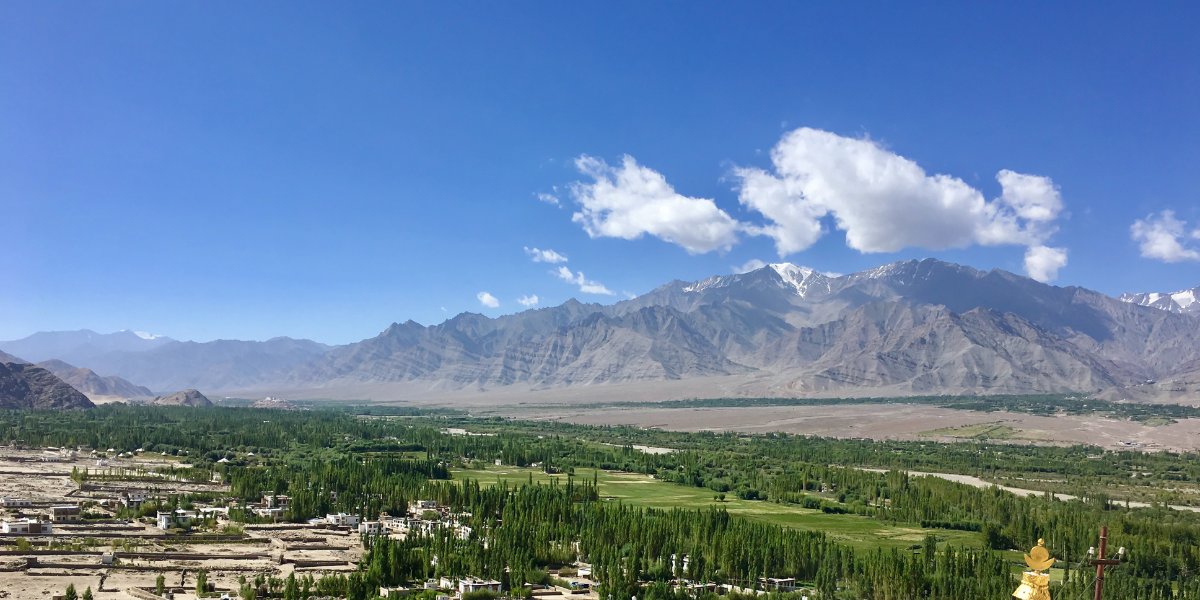
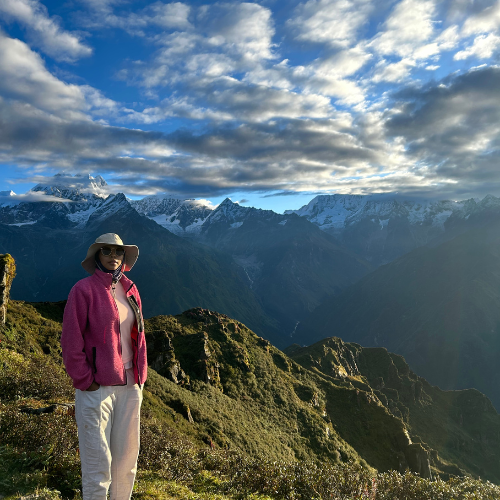 Kriti Maharjan
Kriti Maharjan
